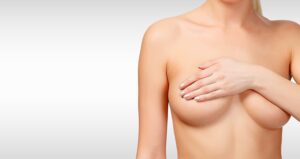What are Inverted Nipples?
In the vast spectrum of human diversity, we often encounter intriguing variations in body structure, and one such variation is the phenomenon of inverted nipples. In this blog, we will discuss what inverted nipples are, the different types of inverted nipples, and how to correct them.
Dr. Joe Gryskiewicz is a respected plastic surgeon based in Minnesota renowned for his expertise in breast surgery. He is dedicated to providing personalized care to his patients, leveraging his extensive experience and deep understanding of aesthetic and reconstructive breast surgery to deliver outcomes that enhance body image and self-confidence.
What are Inverted Nipples?
To understand inverted nipples, it’s essential to first grasp the structure of the nipple. Nipples are a small projection of skin located in the center of the breast. They contain multiple tiny openings that allow the passage of breast milk. Structurally, a nipple is composed of smooth muscle fibers, glandular tissue, and a complex network of milk ducts that lead from the milk-producing glands to the tip of the nipple.
In most individuals, the nipple protrudes outward; however, in the case of inverted nipples, they retract inwards towards the breast. This inversion occurs because the connective tissue and the milk ducts, which are shorter or tighter than usual, pull the nipple inward. It’s worth noting that inverted nipples are quite common, affecting approximately 2 to 10 percent of women, though men can have them too.
Inverted nipples can be present from birth or they can occur later in life due to various factors, such as changes in breast size, infections, or other underlying conditions. They can be permanent or transient, responding to temperature or touch. The inversion of nipples is not a disease or disorder, but rather a natural anatomical variation. However, a sudden inversion of previously normal nipples can be a sign of an underlying medical condition and should be evaluated by a healthcare professional.
Types of Inverted Nipples
Inverted nipples are not a one-size-fits-all situation. In fact, they are categorized into three grades based on the severity of the inversion and how the nipple responds to external stimuli like cold temperatures or touch.
- Grade 1: This is the mildest form of nipple inversion, also known as ‘shy’ nipples. In this case, the nipples are inverted but can be made to protrude or ‘evert’ relatively easily with manual stimulation, cold temperatures, or arousal. Once everted, they tend to stay that way for some time before retracting again. Importantly, individuals with Grade 1 inversion usually don’t have any issues related to breastfeeding because the nipple can become everted during this process.
- Grade 2: This grade represents a moderate form of nipple inversion. Here, the nipples can still be pulled out manually or respond to stimuli, but they will retract immediately once the stimulation is removed. Unlike Grade 1, breastfeeding may be more challenging because the nipple doesn’t stay everted for as long.
- Grade 3: This is the most severe form of nipple inversion. The nipples are always inverted and do not protrude with stimulation or changes in temperature. The retraction is usually due to tighter connective tissue and shorter milk ducts that physically prevent the nipple from everting. Breastfeeding can be particularly challenging with Grade 3 inversion, and some women may choose to pursue surgical intervention to assist with this.
What Causes Inverted Nipples?
Inverted nipples can be attributed to a variety of causes, ranging from simple genetics to various underlying conditions. It’s crucial to emphasize that the majority of these causes are not medical concerns but rather natural variations or changes in the body. Here are some potential causes:
- Genetics: Just as we inherit traits like eye color or hair texture from our parents, inverted nipples can also be a hereditary feature. It’s the most common cause and typically presents from birth or puberty. In these cases, inverted nipples are a completely normal anatomical variation and do not indicate any underlying health problems.
- Changes in breast size: Changes in the size of the breast can sometimes cause nipples to become inverted. This can happen during puberty, pregnancy, breastfeeding, or weight loss, as these situations can cause the skin and tissues of the breast to stretch or tighten, leading to inversion.
- Aging and sagging: As we age, our skin naturally loses elasticity, and breasts are no exception. This sagging, or ‘ptosis,’ can sometimes cause the nipples to invert.
- Infections or inflammations: Certain conditions such as mastitis — an inflammation of breast tissue that results in breast pain, swelling, and redness — can lead to inverted nipples. This is usually temporary and resolves once the infection is treated.
- Trauma: Trauma to the breast, such as from an injury or surgery, can sometimes cause the nipples to invert. This is due to the scarring or damage to the milk ducts and surrounding tissue.
- Breast cancer: Although it’s less common, inverted nipples can sometimes be a symptom of breast cancer, especially if the inversion is a new development and only affects one breast. It’s crucial to seek medical advice if you notice sudden changes in your breasts.
While this list might seem a bit daunting, it’s important to remember that the most common cause of inverted nipples is genetics, and most cases do not pose a threat to your health.
Impact of Inverted Nipples on Breastfeeding
One of the major topics surrounding inverted nipples is their potential impact on breastfeeding. While it’s true that inverted nipples can present some challenges in this regard, it’s important to note that many women with inverted nipples can successfully breastfeed.
Breastfeeding is more about the latch than the nipple. The baby needs to latch onto both the nipple and the surrounding areola. Thus, if the baby can achieve a proper latch, breastfeeding can usually occur without issues.
However, challenges may arise, particularly with a first pregnancy or with more severe nipple inversion. For instance, the baby may struggle to latch properly, or the mother may experience discomfort.
So, what can be done to assist with breastfeeding when inverted nipples are a factor? Here are some strategies:
- Hoffman technique: This is a non-surgical intervention that involves stretching the skin at the base of the nipple to break the adhesions that cause the nipple to invert. It can be performed at home but should be done under guidance from a healthcare provider.
- Breast shells or nipple shields: These are plastic devices worn over the nipple to help it protrude more. Breast shells can be worn between feedings, while nipple shields are worn during feedings to help the baby latch.
- Breast pump or manual stimulation: Using a breast pump or manually stimulating the nipple before feeding can help the nipple to become more erect, making it easier for the baby to latch.
- Latch techniques: Certain latch techniques can help a baby feed effectively from an inverted nipple. A lactation consultant can provide personalized advice and guidance on this.
Surgical and Non-Surgical Options to Correct Inverted Nipples
While it’s essential to understand that inverted nipples are a natural variation and do not necessarily require treatment, there are medical interventions available for those who choose to pursue them. These interventions may be chosen for a variety of reasons, such as personal aesthetics or difficulties with breastfeeding. Here are a few of the most common interventions:
- Nipple eversion surgery: This surgical procedure aims to ‘evert’ or ‘turn out’ the nipples, making them protrude. There are different techniques, but most involve cutting around or under the nipple to release the fibrous tissue and ducts that are causing the inversion. A small device might then be placed in the nipple to keep it protruding during the healing process. It’s important to know that depending on the method used, this surgery may affect breastfeeding ability, so it’s something to discuss in detail with the surgeon.
- Suction devices: These are non-surgical devices that work by applying a gentle vacuum pressure to the nipple, encouraging it to protrude. These devices, like the Niplette or nipplette suction cups, can be used for several hours a day over a period of weeks to months. They’re a less invasive option but require consistent use and results can vary.
- Dermal fillers: For a less invasive yet still medical approach, some individuals opt for dermal fillers. Injected under the nipple, they can provide a temporary lift to the area. This method, however, does not provide a long-term solution and may need to be repeated every few months.
Breast Health Checks
The importance of regular breast health checks cannot be overstated, regardless of whether you have inverted nipples or not. While inverted nipples are a natural and harmless variation, changes in nipple structure, such as a nipple that suddenly inverts after regularly protruding, could potentially signal an underlying health issue.
- Self-examinations: Performing regular breast self-examinations is a key step in monitoring your breast health. It involves palpating the breasts and looking at them in the mirror to detect any changes, such as new lumps, nipple discharge, skin changes, or a sudden inversion of the nipples. If you do notice any changes, it’s essential to consult with a healthcare professional.
- Clinical examinations: Regular check-ups with your healthcare provider are also vital. They can perform a more comprehensive examination and provide guidance based on your personal health history and risk factors.
- Mammograms: A mammogram is a type of x-ray used to detect early signs of breast cancer, often before it can be felt with a physical examination. The American Cancer Society recommends women start having annual mammograms at 45, or earlier based on individual risk factors.
- Ultrasounds and MRIs: Depending on your risk factors, your doctor might recommend additional tests like ultrasounds or MRIs to get a more detailed look at your breast tissue. These tests can provide further information and help detect any abnormalities.
FAQs About Inverted Nipples
Are inverted nipples common?
Yes, inverted nipples are quite common. It’s estimated that between 10 to 20 percent of people are born with one or both nipples inverted.
Are inverted nipples a sign of breast cancer?
While a newly inverted nipple can sometimes be a symptom of breast cancer, it is not a definite sign. Many individuals are born with inverted nipples, or they can invert with age, weight loss, or other natural body changes. If you notice a sudden inversion of your nipple, particularly if it’s associated with other changes like a lump, nipple discharge, or skin changes, it’s best to consult a healthcare professional.
Can inverted nipples be corrected?
If an individual desires, inverted nipples can be corrected through various methods. These include the use of suction devices, non-surgical procedures, and surgical intervention like nipple eversion surgery. However, choosing to correct inverted nipples is a personal decision and not medically necessary in most cases.
Further Reading about Breast Surgery with Dr. Joe
- Read Dr. Joe’s Male Breast Reduction Surgery Page
- Read Dr. Joe’s Breast Reconstruction
- Read Dr. Joe’s Breast Augmentation with Lift Surgery page
- Read Dr. Joe’s Blog About What Is a Mini Boob Job?
Medical References About Inverted Nipples
- Inverted (Retracted) Nipples: Signs, Causes & Treatment – Cleveland Clinic
- Inverted Nipples: Common Causes – WebMD
- Inverted Nipple: Treatment, Causes, And Pictures – Medical News Today
- Surgical Correction of Inverted Nipples – NCBI


